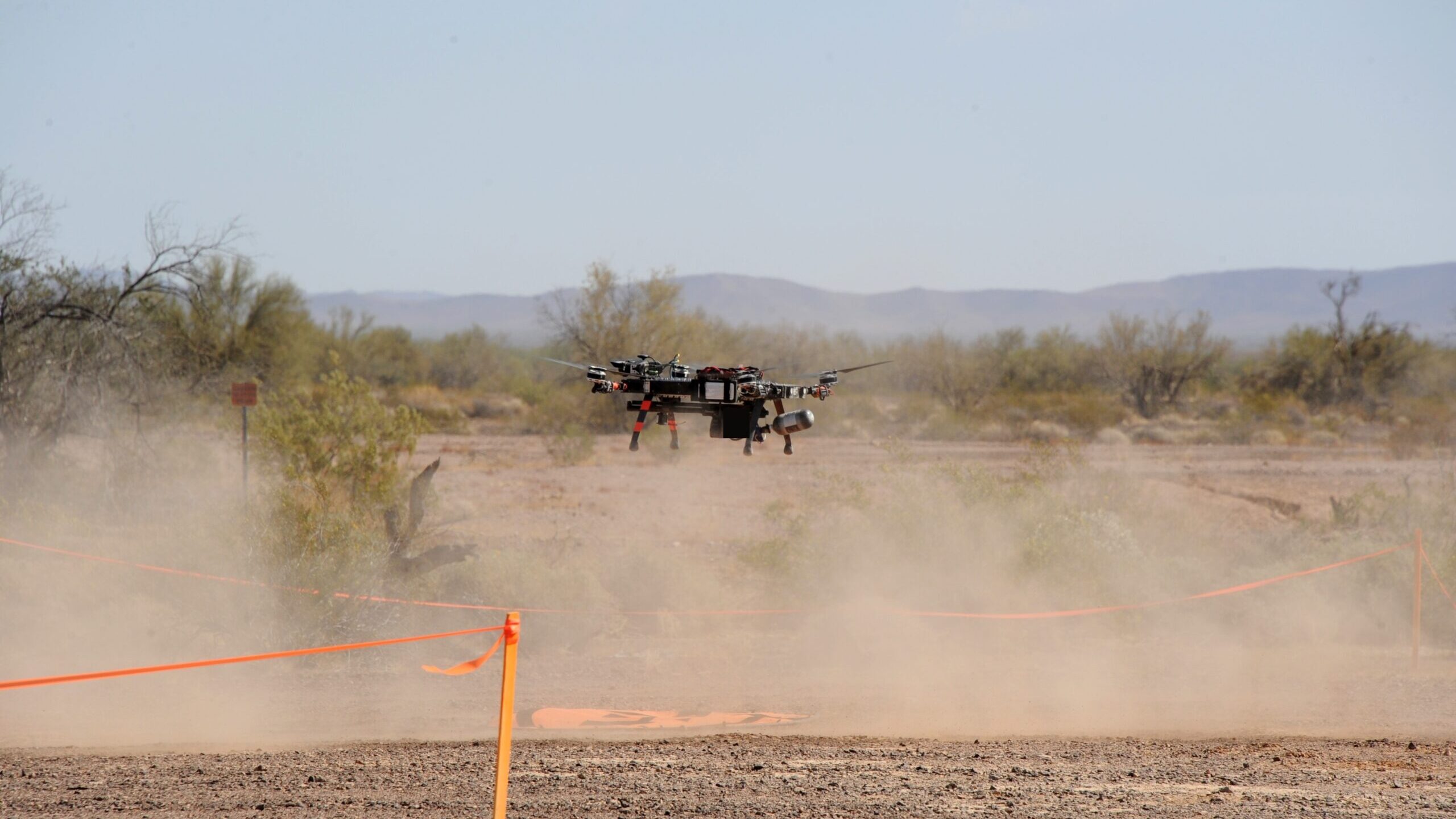
The Army tested low collateral effects interceptors in April 2021 and focused on the most cutting edge drone-busting technology. (Mark Schauer/US Army)
SMD 2022 — The US military will need to start “leaning” toward kinetic options for knocking out drones as unmanned aerial systems become increasingly autonomous, the Army’s top counter-drone leader said Wednesday.
The Army is investing heavily in counter-drone solutions, as recent conflicts have demonstrated their effectiveness as a relatively cheap weapon on the battlefield. But as advanced adversaries add more autonomy to their drones, the systems will become harder to knock out of the sky because the drones will rely far less on a communications link for navigation, insulating them, to an extent, against electronic warfare threats.
The push towards autonomy “is a direct attempt to evade the EW-type (electronic warfare) of capability because now you’re not cutting a link,” said Maj. Gen. Sean Gainey, director of the Joint Counter-Unmanned Aerial Systems Office, told Breaking Defense. While EW solutions will still be needed, “you’re going to start leaning more towards having a kinetic solution.”
“They’re building in redundancy in these systems where if you cut off something, they can fall back on something else,” he said during the interview at Space and Missile Defense Symposium in Huntsville, Ala.
Gainey’s organization is tasked with leading the Pentagon’s effort on countering unmanned aerial threats, developing doctrine, requirements, materiel and training for cUAS. For the last 18 months, the JCO has hosted three demonstrations with industry to test cUAS capabilities. Those demonstrations have tested a range of systems, including bullets, electronic warfare, drones that intercept other drones and high-powered microwaves to counter small flying threats. For the Army, it’s about ensuring a range of capabilities are available.
“If you’re focused only on an EW system and they’ve evolved past whatever you’re denying with that EW or nonkinetic capability, we got that kinetic effector that can then provides that capability,” Gainey said during his speech at SMD.
Related: ‘Bullet made out of light’: Army to field first Stryker-mounted combat laser in next 45 days
At the first JCO demonstration in April 2021, the Army and Air Force tested technology called “low-collateral interceptors,” which capture or intercept small drones with minimal risk to surrounding air space. Gainey said the Air Force has found “three or four” low-collateral interceptor solutions that are currently undergoing operational assessment in the field, including in Ukraine.
“Some … the Ukrainians are using so we’re getting a lot of data back on that,” Gainey said in his speech.
The JCO is also looking at high-powered microwave technology to defeat drone swarms, in which a pack of drones can fly together and complete coordinated tasks. The high-powered microwave technology sends out a high-voltage burst of energy that can knock out a computer systems.
“This is going to provide us the best opportunity to get after larger swarms that come your way because essentially, you’re looking (at) technology, that if it continues to move, can potentially fry the electronics in these UASs,” Gainey said in the interview.
Gainey also highlighted a palletized 10-kilowatt laser developed by the Army’s Rapid Capabilities and Critical Technologies Office, that has been deployed in theater and is undergoing operational assessment in the field.
“We’re sending it into theater, placing it and going to operationally assess and see what kind of success we’re going to have and what range of targets (and) success we’re gonna have, as we make our ultimate decision on what’s the right size system to have for the counter-UAS fight,” Gainey told Breaking Defense.
Lt. Gen. Neil Thurgood, director of the Rapid Capabilities and Critical Technologies Office, announced yesterday that the service’s Directed Energy Maneuver Short-Range Air Defense program would deliver its first Stryker-mounted 50-kilowatt laser in the next 45 days. That program is designed to defend against different sized drones, as well as rockets, mortars and artillery.
Thurgood announced an additional directed energy project at the symposium on Wednesday called the Army Multi-Purpose High Energy Laser, planned to be mounted on the Infantry Squad Vehicle, to give soldiers another cUAS option.
“If you can imagine now, in a location where you have 10, 20, and 50 kilowatt (lasers), now you’re talking about making decisions on which way to move forward, you have a range of opportunities,” Gainey said in the interview. “So whichever one hits the sweet spot for us, is what we will scale and get out to the services moving forward.”






















